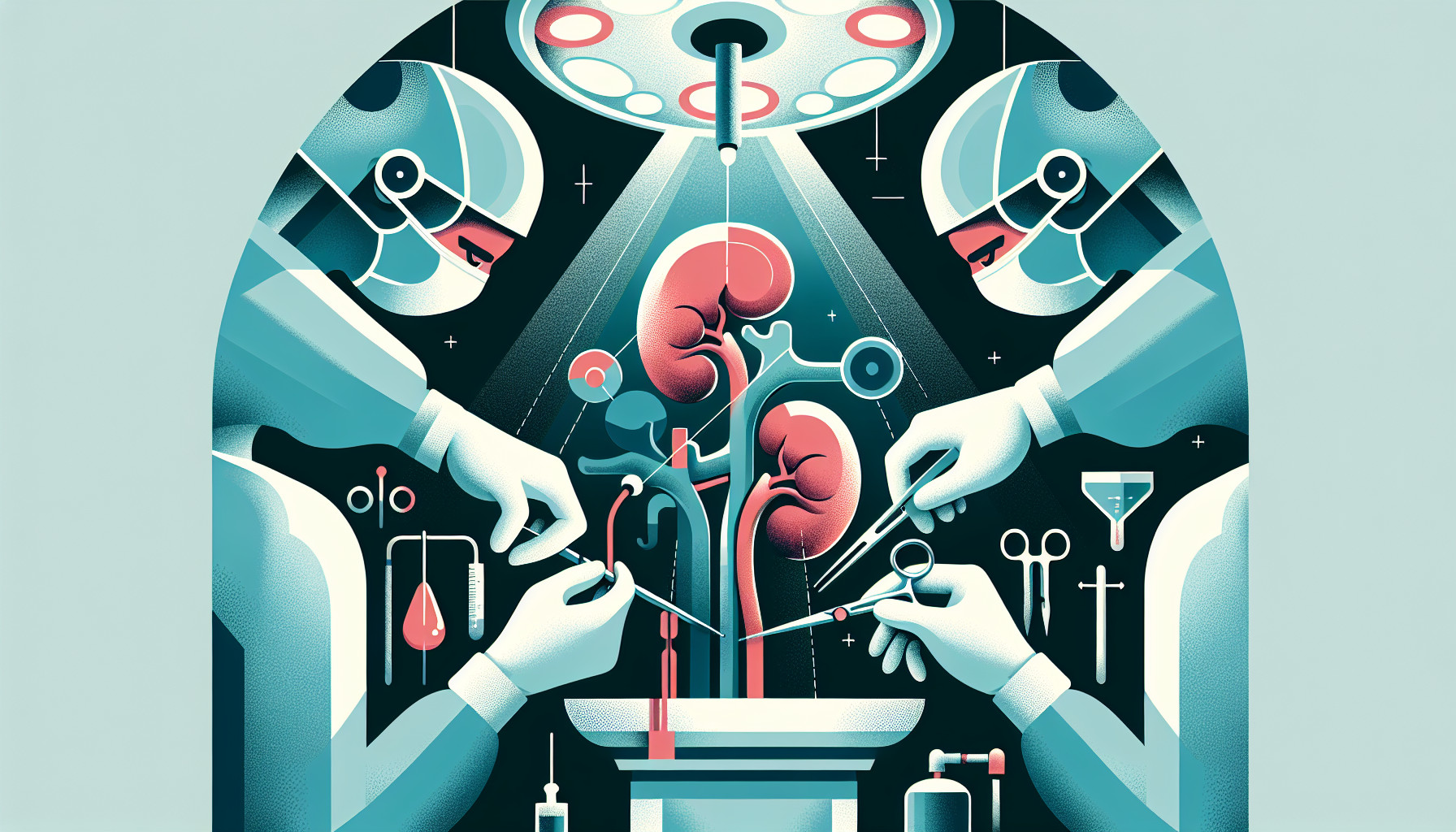Our Summary
This research paper provides a detailed guide on how to perform a kidney removal surgery from a living donor using minimally invasive techniques. These techniques aim to reduce the risk of complications and discomfort during and after surgery. The guide covers everything from how to position the patient and place the instruments, to how to close the wound and care for the patient after the operation. It also lists the standard equipment required for the procedure. The authors base their guide on their experiences in performing over 500 of these surgeries since 2002. They also provide videos to demonstrate the process. The paper emphasizes that while every case is unique, following a systematic approach can result in faster surgeries, fewer complications, and better outcomes for both the donor and the recipient of the kidney.
FAQs
- What are the steps and techniques involved in performing a laparoscopic nephrectomy?
- How does the minimally invasive method for kidney removal from a living donor reduce the risk of complications and discomfort?
- What is the standard equipment required for a laparoscopic nephrectomy?
Doctor’s Tip
One helpful tip a doctor might tell a patient about laparoscopic nephrectomy is to follow all pre-operative instructions provided by the healthcare team. This may include fasting before the surgery, stopping certain medications, and undergoing any necessary tests or evaluations. Following these instructions can help ensure the surgery goes smoothly and reduces the risk of complications. Additionally, the doctor may advise the patient to discuss any concerns or questions they have about the procedure with their healthcare team to alleviate any anxiety or uncertainty.
Suitable For
Patients who are typically recommended for laparoscopic nephrectomy include:
Patients with kidney cancer: Laparoscopic nephrectomy is often recommended for patients with localized kidney cancer, as it can effectively remove the tumor while preserving as much healthy kidney tissue as possible.
Living kidney donors: Laparoscopic nephrectomy is the preferred technique for removing a kidney from a living donor, as it allows for a quicker recovery and less post-operative pain compared to traditional open surgery.
Patients with non-functioning kidneys: Laparoscopic nephrectomy may be recommended for patients with non-functioning or poorly functioning kidneys that need to be removed to improve overall kidney function.
Patients with kidney stones: In some cases, laparoscopic nephrectomy may be recommended for patients with large kidney stones that cannot be effectively treated with other procedures.
Patients with polycystic kidney disease: Laparoscopic nephrectomy may be recommended for patients with polycystic kidney disease who have severely enlarged kidneys that are causing pain or other complications.
Overall, laparoscopic nephrectomy is a safe and effective procedure for a wide range of patients, and offers many benefits over traditional open surgery. It is important for patients to discuss their specific situation with their healthcare provider to determine if laparoscopic nephrectomy is the best treatment option for them.
Timeline
Before laparoscopic nephrectomy:
- Patient undergoes pre-operative tests and evaluations to determine suitability for surgery
- Patient receives instructions on pre-operative preparation, such as fasting and medication adjustments
- Patient arrives at the hospital on the day of surgery and is prepared for the procedure, including anesthesia administration
During laparoscopic nephrectomy:
- Surgeon makes small incisions in the abdomen and inserts a camera and specialized instruments to remove the kidney
- Surgeon carefully dissects and disconnects the kidney from surrounding tissues and blood vessels
- Kidney is removed from the body through one of the small incisions
- Surgeon closes the incisions with sutures or surgical tape
After laparoscopic nephrectomy:
- Patient is closely monitored in the recovery room for any immediate complications
- Patient may experience pain, discomfort, and fatigue in the days following surgery
- Patient is instructed on post-operative care, including wound care, pain management, and activity restrictions
- Patient follows up with the surgeon for post-operative visits to monitor healing and kidney function
Overall, laparoscopic nephrectomy offers a minimally invasive approach to kidney removal, leading to faster recovery times and reduced risk of complications compared to traditional open surgery.
What to Ask Your Doctor
What are the potential risks and complications associated with laparoscopic nephrectomy?
How long is the recovery period after laparoscopic nephrectomy?
What kind of post-operative care will be required, and for how long?
Will there be any dietary or lifestyle changes needed after the surgery?
How soon can I return to work or normal activities after laparoscopic nephrectomy?
What kind of pain management options are available during the recovery period?
How often will follow-up appointments be needed after the surgery?
What is the success rate of laparoscopic nephrectomy in terms of kidney function and overall health outcomes?
Are there any specific qualifications or experience you have in performing laparoscopic nephrectomy procedures?
Are there any alternative treatment options to consider before moving forward with laparoscopic nephrectomy?
Reference
Authors: Farrow JM, Vasquez R Jr, Zappia JL, Sundaram AC, Sharfuddin AA, Powelson JA, Goggins WC, Sundaram CP. Journal: J Endourol. 2021 Sep;35(S2):S75-S82. doi: 10.1089/end.2021.0227. PMID: 34499549
